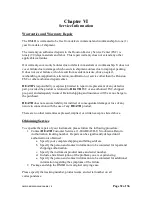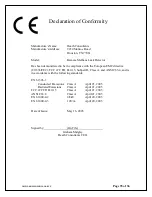
Page 24 of 36
101515-0 RMLD MANUAL REV
F
•
Move in closer if the range is too far or ground elevation causes the beam to not
come into contact with the ground (dark zones).
While scanning a service where the location is not known:
•
Use an “X” pattern or similar pattern to thoroughly scan the area.
•
Target typical vent areas i.e., along the street or sidewalk edges.
•
Target locations where valves may be placed.
•
Scan along the foundation of the structure.
•
Move in closer if the range is too far or ground elevation causes the beam to not
come into contact with the ground creating dark zones (shadow).
When scanning the meter, keep the following considerations in mind:
•
Maintain at least 10 ft. from the meter so the beam width is not too small.
•
Thoroughly scan the ground around the meter.
•
Use the best angle to the meter that provides a good background behind the meter.
•
If the meter is out in the open, or the angle is limited such that there is no
background right behind the meter; scan the meter in a horizontal “Z” pattern
maintaining a constant distance as you sweep across.
If a leak is located near or on the meter, these tips help to determine if the leak is
underground or on the meter:
•
Try to keep the wind to your back.
•
Stand about 5 to 10 ft. from the meter.
•
Use the Pure Tone to help pick out the strongest return.
•
Start out aiming low on the ground.
•
Work the beam up and around the piping (Note: The spotter laser is about 2.75”
above the IR laser beam).
•
If in doubt and if the leak is underground, bar hole the area.
Long Range Scanning:
The RMLD can detect leaks from up to 100 ft. away. Actual distance may vary due to
target surface and environmental conditions. As the scanning distance is increased, the
laser light level returned will become lower. As the maximum distance is approached, a
“low laser light level” tone is heard. You will need to move in closer.
For best results when scanning at distances greater than 50 ft., it is important to slow
down the scanning rate and take care in pointing the laser. When taking aim, use the
spotter laser or the sighting marks on the side of the Transceiver to ensure proper
scanning of the target area.















































